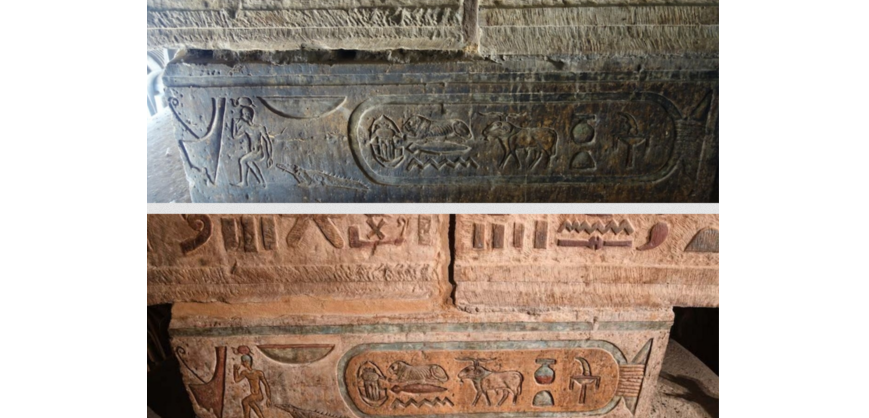The sands of time ravage all, stripping structures from the Parthenon in Athens to monuments in Persepolis of their color. But in rare cases, the past prevails, and structures retain hints of their once-vivid polychromy. The sandstone vestibule (or pronaos) of the temple of Esna, abutting the Nile about a half hour south of Luxor, is one such example, keeping its color with remarkable success. According to an Egyptian-German team restoring the temple, that preservation is a product of soot and bird poop.
Built during the reign of Claudius, between the years 41 and 54, the temple at Esna is younger than many other Egyptian temples you may think of. It was once one of three in the city, but the other two were deconstructed during the Napoleonic era for their limestone. (The surviving temple should consider itself lucky that it is sandstone, which has fewer secondary uses.) The temple was likely in use for religious purposes until about the third century.
B-1 flies Bomber Task Force mission in Aegean Sea (photos)
English & Scottish get drunk most often, 25-nation survey finds
The temple has accumulated the detritus of nearly two millennia: Over the years, people came and squatted, making tea and burning fires; craftsmen temporarily set up shop below its high ceilings. By the 19th century, the temple had become a storage room. In the structure’s early days, the exterior was “proper and clean,” says Christian Leitz, an Egyptologist at the University of Tübingen and project lead on the ongoing restoration work at Esna. “There were a lot of rules on how to keep your temple clean, but after it was abandoned, it was just a building,” Leitz says. “Nothing more”.
Read more: Atlas Obscura








































